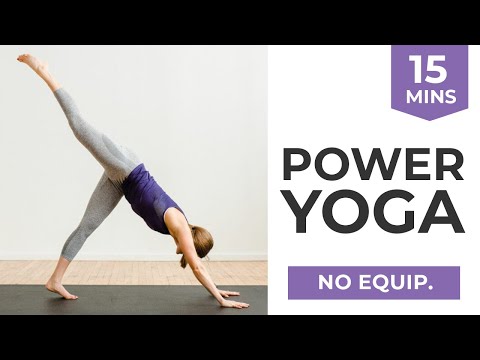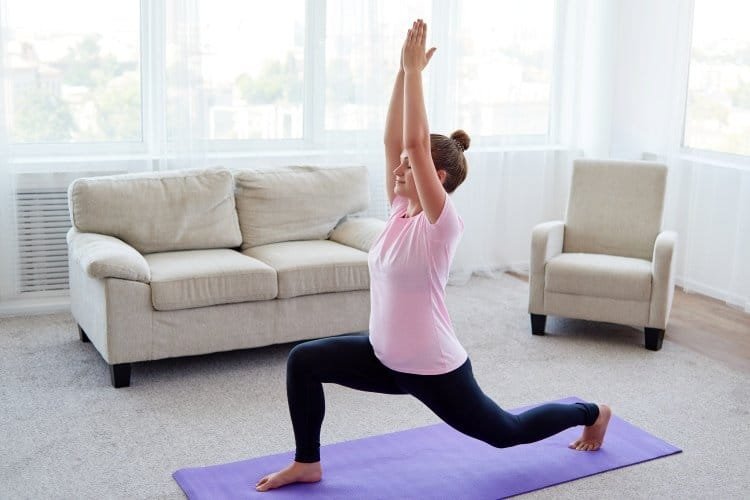
Bhakti yoga, a devotional practice, integrates asana, chanting, mudras and prayer. You may also want to attend to an altar. While chanting is not required, it can help a person to focus on the core beliefs of yoga. Bhakti, regardless of religious practice, can be extremely beneficial. Here are some of its benefits.
Bhakti can be described as a form or devotion. Bhakti is a form of devotion that focuses on a particular type of divinity and trains the mind towards the heart center. During the practice period, the devotee will meditate on a deity of his or her choice, and eventually, the focus will be on the real nature of the ultimate reality. This is a necessary element of a Hindu temple. A temple of Hinduism must contain all five deities. Those who practice bhakti yoga are bound by strict moral codes. They can't do any harm and they must not justify their actions.

Practicing bhakti yoga involves tapping into the universal love that is present within each human being. The practice leads to trust in the universe as well as positive energy for helping others. Bhakti yoga helps one develop the devotional fire that burns within his or her heart. Bhakti Yoga is a spiritual exercise.
In Bhakti yoga, there are six types of bhakti. Para bhakti, a lower form or devotion, is the first. This form is rooted by selfish desires. On the other hand, para kriya means acknowledging the transcendent nature of the God. It's important to know that the practice of bhakti yoga is not limited to kirtan or chanting.
Bhaktas express their love for God through chanting. They may attend kirtan sessions or sing some of their favourite spiritual songs at the house. Bhakti yoga does not require a great voice. It is all about intention. The chanting process can be used as a powerful meditation tool in a bhakti class.

When practicing bhakti yoga, the devotee can be transformed into an idol by worshipping the God. One can practice many types of bhakti Yoga. Chanting is one of the most popular bhakti yoga practices. One should be aware that a Bhakta can practice devotion in many ways. Some bhaktas may use a mala in order to count the number times they have recited certain mantras.
Bhakti Yoga is the most fundamental form of yoga. Persons should believe in God and the Supremeself. Once the practitioner develops this level of faith, the practice of bhakti yoga will automatically begin. The practice of bhakti Yoga will remove all impurities from the practitioner's Chitta. Bhakti is a way to increase your spiritual growth.
FAQ
Do I have the obligation to exercise every day or just on occasion?
No! You should do at least 30 mins of moderate-intensity activity 5 days per week. This means that you should be able to walk fast enough to feel slightly out of breath, or bike hard enough to sweat.
How many times per week should I exercise
It depends on how much time you have available and what type of exercise you prefer. You should do moderate-intensity aerobic exercise three to five days per week. It is important to not overdo it. You will get the maximum benefits from your workouts if you do not exercise consistently.
Which exercises work best for you?
It all depends on your fitness goals. Some people concentrate on endurance activities such running, cycling, swimming. Others love lifting weights or using resistance bars. There are so many different types of exercise programs available today. Find the best option for you.
Can I drink alcohol while exercising?
Yes. Alcohol has increased energy expenditure, speed up recovery time, and reduced soreness.
Alcohol also increases insulin sensitivity, making it easier to absorb glucose.
Alcohol can cause dehydration. This can slow down your metabolism. Also, alcohol can reduce testosterone production, which may lead to lower muscle-building potential.
It is important that women refrain from drinking alcohol before they exercise. Women who have consumed a lot of alcohol should wait at most 24 hours before working out.
The best thing for women who are pregnant is to avoid alcohol.
Men should have no more than one drink per day.
Is it true?
Protein helps maintain healthy bone and tissue. Too much protein can cause calcium to be excreted through the urine. This can cause kidney stones.
It is important to remember that not all people get kidney stones from eating more than 2g protein per kilogram (2.2lbs) of body weight. People can eat large amounts of protein and not get kidney stones.
Your sodium intake can prevent kidney stone formation. The kidneys regulate the amount of sodium they consume. Too much sodium results in a higher risk of developing kidney stones.
If you have kidney stone, you might also consider reducing your protein intake. About half of adults' daily caloric intake is made up of protein. If you cut back on protein, you'll likely lose weight.
If you do decide to eat more protein, don't go overboard. Do not eat more than 20% of your daily calories from protein.
What's a good routine for a daily workout?
Regular exercise is essential to staying fit. It doesn't make a difference what kind of activity you choose. As long as you do it often, it will be beneficial. Consistency is the key. To achieve success, you need to persevere for a long time.
Begin by walking for a few minutes each day. Increase the time you spend exercising each day until you can do 30 minutes. This could include running, cycling, swimming, weight training, yoga, or aerobics classes.
It is important to exercise every day of the week. Don't skip any sessions unless you have a valid reason for not attending.
Make sure to wear appropriate clothing and footwear for outdoor exercise. You also need to consider the weather conditions and whether they affect your ability to exercise safely.
When you exercise, make sure you are drinking plenty of water. Drinking alcohol during exercise can cause dehydration. Also, don't drink caffeine-rich beverages like tea, coffee, or cola. They will not only give you more energy but also dehydrate you.
After your first exercise, you may feel tired. You'll feel more energetic and refreshed if you keep going with your exercise program.
What is your favorite workout order?
It all depends upon what you are trying to achieve. To build muscle mass, you should first lift heavy weights. Then, move on to cardio. You can then go to strength training if your goal is to lose weight.
Cardio can be done if you want to just lose fat. After that, you can add strength training.
Cardio is the best way to build muscle mass.
You should also eat before your workout. This will fuel your muscles, making them work harder. It makes you feel better when you exercise.
Statistics
- An estimated calorie range for moderately active adult males falls between 2,200 to 2,800 calories per day, depending on age. (eatright.org)
- 10 pounds in a month is likely during a lean bulking phase, especially for beginners. (muscleandstrength.com)
- According to the American Academy of Dermatology (AAD), men over 50 are at a heightened risk of developing it. (healthline.com)
- By John Thompson Take a whopping 38% off a set of PowerBlock Pros. (menshealth.com)
- Candidates and applicants must pass all four tests at 70% (minimum level) to graduate from Basic Deputy U.S. Marshal (BDUSM) Training. (usmarshals.gov)
External Links
How To
How can a man get in shape in 30 days?
Breaking down your fitness goals into smaller, more manageable steps is the best way for you to reach your fitness goals.
Each day you need to be working towards your goal. This could mean anything from doing 10 pushups for 5 minutes to running 3km.
Positive results will be achieved if you do this consistently over time.
Here, consistency is the key. You have to keep at it until you succeed!
What's the difference between Aerobic Fitness & Anaerobic Fitness, and how can you tell?
Anaerobic fitness means that our bodies can perform intense physical work with no oxygen. Anaerobic pathways provide sufficient energy for high-intensity exercise. Anaerobic pathways can include glycolysis, creatinephosphate, the Phosphagen, and lactic acids.
Aerobic fitness, on the other hand, is a sustained low-intensity exercise. The primary source of energy for aerobic exercise is oxygen. In other words: The aerobic pathway gives more energy than that of the anaerobic.
You must build your aerobic capacity before you can run a marathon. If you don't focus on increasing your aerobic capacity, you will not be able finish the race.
Aerobic fitness may also be known as cardiovascular fitness. The most common methods for assessing cardiovascular fitness include VO2 max testing or step tests.
Test VO2 Max
VO2 max is the maximal amount of oxygen (O2) that the body uses during exercise. This test determines how much O2 your body can use during exercise.
This is the best test to assess cardiovascular fitness. However, it requires expensive equipment and highly trained professionals to administer the test.
Step Tests
Step tests are a simple but effective way to measure cardiovascular fitness. These tests require you to walk or run on a track or treadmill for a set amount of time, depending on your weight and age.
These tests are inexpensive, easy to conduct, and can be done almost anywhere. For instance, you can walk on a treadmill for 2 minutes, rest for 1 minute, repeat this process for 20 minutes, and then stop. Throughout the entire session, your heartbeat should stay within a set range.
This method is known as the "Bruce Protocol". Bruce himself was a runner who developed this protocol after he realized that his heart rate would not increase when he ran longer distances.